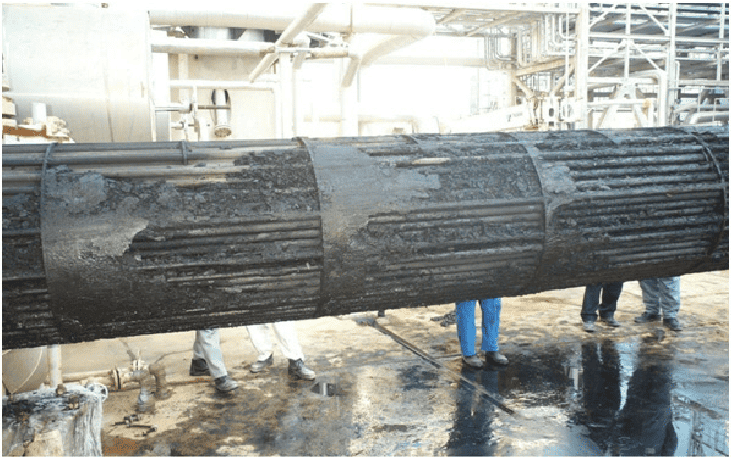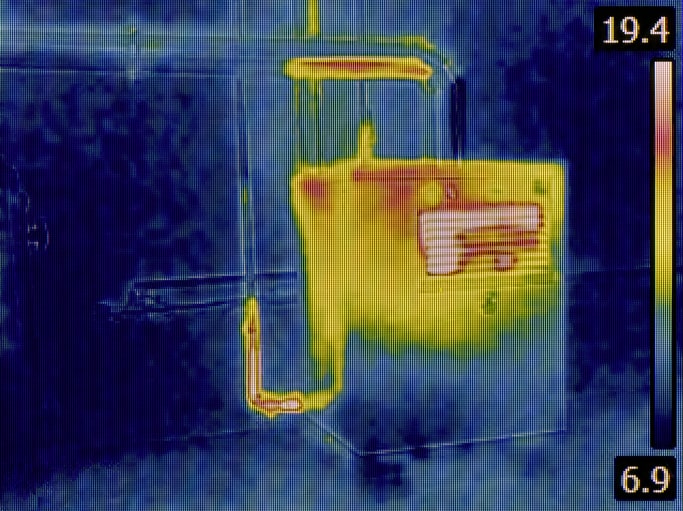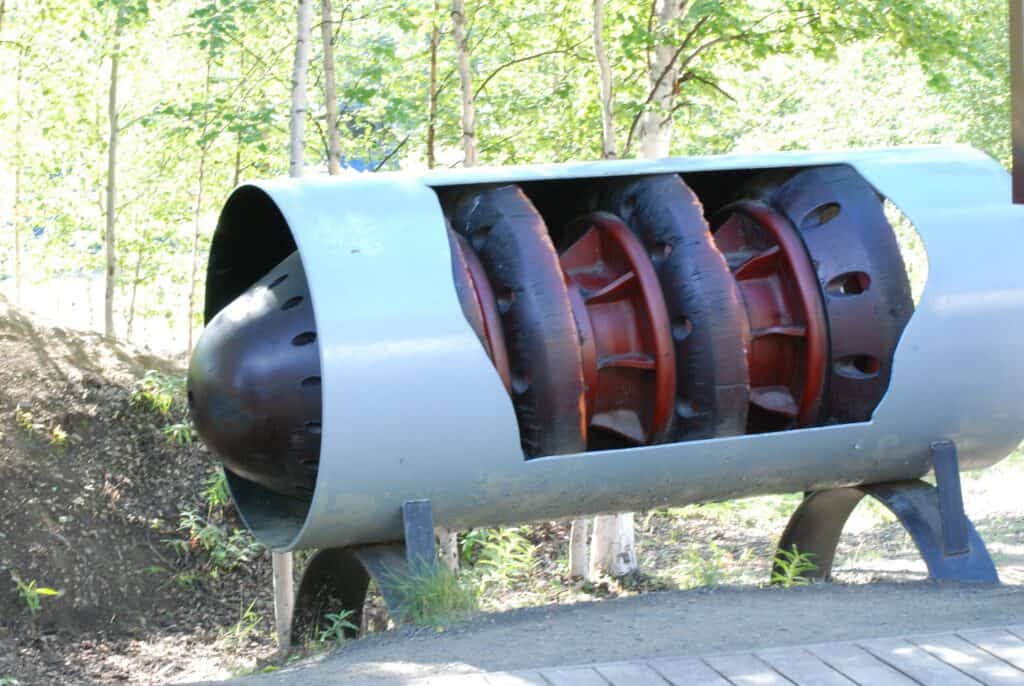
What is the Decoking Process?
One significant hurdle that industrial facilities encounter is the build-up of coke/scale deposits within process tubes. This internal fouling, if not addressed, could result in a plethora of operational issues. This introduces the need for the decoking process. In this article, we review the coke formation process in equipment and its effects, coke detection techniques, and methods of decoking.
Coke Formation in Equipment
Coke refers to a carbonaceous residue that forms on the walls of combustion chambers or process tubes of equipment such as boilers. The formation of this material is a complex process that occurs due to the decomposition of heavy hydrocarbons like asphaltenes into solid carbonaceous deposits. During the heating process in facilities such as fired heaters and boilers, the hydrocarbons in the feedstock crack and decompose into smaller molecules. As the temperature increases, the smaller molecules polymerize and cross-link with each other to form heavier, more complex molecules. These new molecules are less volatile and have a higher tendency to decompose and form solid carbon deposits, or coke.

Effects of Internal Fouling
Internal fouling, which refers to the presence of coke/scale deposits on the walls of industrial equipment, can have profound effects. The following sections review some of these effects, thus, highlighting the need for decoking.
Degradation
Coke deposits create an environment for the accumulation of corrosion-promoting species. For example, sulfur-containing compounds can aggregate at deposit sites and react with the metal surface of equipment to form sulfides. These sulfides can cause hydrogen embrittlement and localized corrosion. Also, the build-up of coke may result in carburization – a type of high temperature corrosion where carbon diffuses into metal and forms carbides, which weaken the metal. Moreover, the formation of carbides reduces the effectiveness of coatings and other corrosion inhibitors. Thus, highlighting the need for the decoking process.
Minimal Heat Transfer
Coke has a low thermal conductivity. So, as it accumulates on the walls of equipment, it acts as an insulating layer that reduces heat transfer efficiency between combustion gasses and process fluids. Compensating for this requires an increase in operating temperature, but ensues harmful effects. Operating at higher temperatures increases the risk of mechanical damage and certain types of corrosion. Eventually, it will become necessary to carry out decoking.
Hotspots
Hotspots refer to localized areas of elevated temperature on equipment. They are a result of a variety of factors, one of which are coke deposits. When a hotspot occurs, the temperature of the affected component could rise above its design limit, thus, leading to warping, material degradation, or even failure.

Limited Productivity
As coke builds up on the internal walls of channels, there is reduction in the cross-sectional area. If this continues, it could result in bottle-necks or even complete blockages. This will have a significant impact on operational throughput. Therefore, it is necessary to have a monitoring system or carry out regular inspections to ascertain the level of build-up, and to enable decoking process scheduling.
Coke Detection Techniques
Early detection of coke deposits is crucial for minimizing operational disruptions via proactive maintenance. Some common techniques include:
- Infrared Imaging: This entails utilizing infrared cameras to identify hotspots on equipment, which are indicative of coke deposits. This non-intrusive method is ideal in areas where access is challenging.
- Ultrasonic Testing: Ultrasonic testing detects coke deposits in equipment by measuring sound waves. Utilizing this method is effective when identifying coke deposits before they become severe, thus allowing for proper scheduling of the decoking procedure.
- Nuclear Magnetic Resonance (NMR): NMR provides detailed insights into the composition and thickness of coke deposits. In addition, it allows for a comprehensive analysis of coke accumulation, which aids in determining the most suitable decoking method.
Types of Decoking
Several methods can serve in the decoking of process tubes in industrial applications with mechanical, chemical, steam-air decoking, and in-line spalling being the most common.
Mechanical Decoking
This decoking process entails flushing out coke from equipment using a pig – a mechanical device with radial appendages like a wire brush. Pressurized water traverses the pig through the equipment, and as it moves, its appendages scrape out the coke on the internal surfaces. Generally, the cleaning process starts with a pig of a smaller diameter and gradually progresses to a pig diameter equivalent to the pipe/tube nominal diameter. Several runs are made with the duration of the process depending on the level of adherence, thickness, and hardness of the fouling.

Chemical Decoking
The chemical decoking process involves circulating and soaking equipment in solvents that soften or dissolve coke deposits. After giving enough time for the solvents to work, water is used to remove all deposits. During this process, it is important to monitor the chloride content of the water to avoid corrosion damage of the equipment. Chemical decoking is ideal for systems with complex geometries and hard-to-reach areas. However, this method is not environmentally friendly, so there is need for careful disposal when flushing, which makes this method more expensive.
Steam-Air Decoking
This method entails using a mixture of steam, air, and heat to cause shrinkage and cracking of the coke deposits. While the steam and air mixture passes inside the equipment, the heating is external. Steam-air decoking works best for radiant tubes, but it does not always remove coke thoroughly. When this is the case, it may be necessary to use another method or to dismantle the equipment; which incurs additional expense and risks damage. Another disadvantage is that chemical reactions of hot coke, steam, and air produce CO, CO2, and H2, which are bad for the environment.
In-Spalling Decoking
In-spalling decoking involves using high-velocity steam to deliver thermal shocks to equipment to create a contracting and expanding effect, to spall coke off internal walls. This is achieved by alternately heating and cooling the steam. Although this method offers less environmental issues than steam-air decoking, and minimizes downtime in comparison to other methods, it is largely less effective. Also, the equipment is susceptible to damage due to contraction and expansion during the spalling process.

